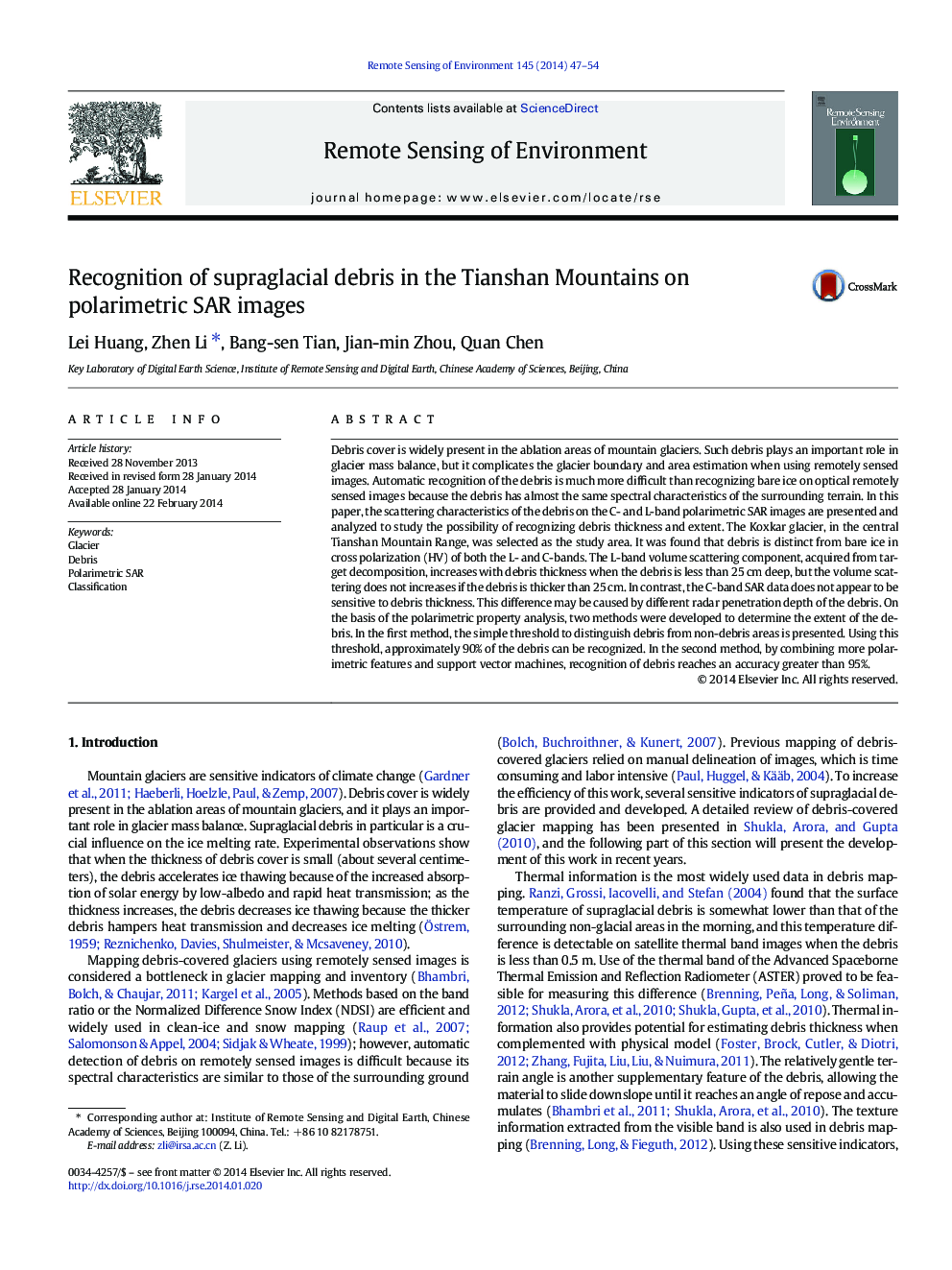| Article ID | Journal | Published Year | Pages | File Type |
|---|---|---|---|---|
| 6346856 | Remote Sensing of Environment | 2014 | 8 Pages |
â¢Recognition of supraglacial debris with polarimetric SARâ¢Debris is distinct to bare ice in cross polarization in both L- and C-bands.â¢L-band volume scattering increases with debris thickness while less than 25 cm.â¢Debris can be discriminated using simple cross polarization threshold.â¢Higher accuracy is achieved using more polarimetric features and SVMs.
Debris cover is widely present in the ablation areas of mountain glaciers. Such debris plays an important role in glacier mass balance, but it complicates the glacier boundary and area estimation when using remotely sensed images. Automatic recognition of the debris is much more difficult than recognizing bare ice on optical remotely sensed images because the debris has almost the same spectral characteristics of the surrounding terrain. In this paper, the scattering characteristics of the debris on the C- and L-band polarimetric SAR images are presented and analyzed to study the possibility of recognizing debris thickness and extent. The Koxkar glacier, in the central Tianshan Mountain Range, was selected as the study area. It was found that debris is distinct from bare ice in cross polarization (HV) of both the L- and C-bands. The L-band volume scattering component, acquired from target decomposition, increases with debris thickness when the debris is less than 25Â cm deep, but the volume scattering does not increases if the debris is thicker than 25Â cm. In contrast, the C-band SAR data does not appear to be sensitive to debris thickness. This difference may be caused by different radar penetration depth of the debris. On the basis of the polarimetric property analysis, two methods were developed to determine the extent of the debris. In the first method, the simple threshold to distinguish debris from non-debris areas is presented. Using this threshold, approximately 90% of the debris can be recognized. In the second method, by combining more polarimetric features and support vector machines, recognition of debris reaches an accuracy greater than 95%.
